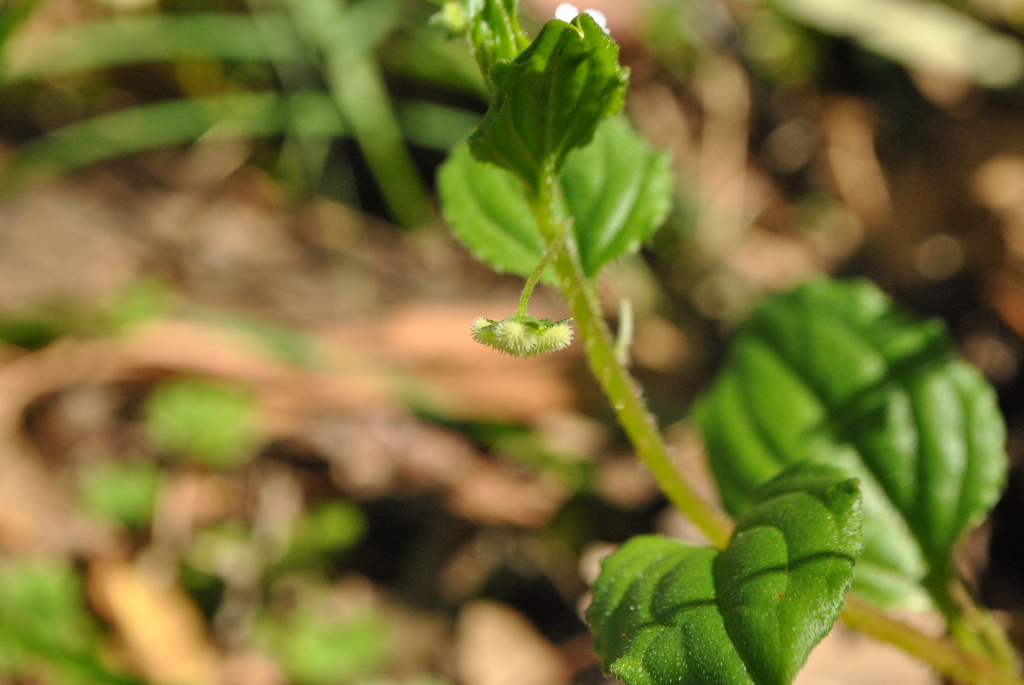Hackelia latifolia
(R.Br.) Dimon & M.A.M.RennerStems trailing, to c. 1 m long or more, tender, sparsely covered with small retrorse prickle-like setae. Leaves ovate to broad-ovate, mostly 2–7 cm long, 1–6 cm wide, apex mucronate, base cuneate to obtuse, margins often undulate with small prickle-like setae, upper surface moderately covered with tubercle-based hairs, lower surface with hairs on veins only; petioles mostly 5–10 mm long. Pedicels 10–25 mm long, elongating in fruit; sepals ovate, 2–2.5 mm long, acute; corolla 2–4 mm long, glabrous except for papillose 2-lobed scales in throat, white, pale blue or pale mauve, tube more or less as long as the obtuse lobes; anthers to c. 0.3 mm long. Mericarps obovoid, 2–3.5 mm long, attached to gynobase by a short funicle, densely spiny, pale brown; spines more or less equally scattered on the flattened outer surface. Flowers mainly Oct.–Apr. (but sporadically throughout the year).
GleP, VVP, GipP, OtP, WaP, CVU, DunT, EGL, EGU, WPro, HSF, HNF, OtR, Strz, HFE, VAlp. Also ?SA, Qld, NSW, Tas. A widespread plant of moist, shaded forests and rainforest margins.
Apparent hybrids with possibly Hackelia suaveolens have been collected near Melbourne and Warragul. These have the petiolate rosette leaves, sessile cauline leaves and indumentum of H. suaveolens but the leaf shape and predominantly single-flowered inflorescences of H. latifolia. The specimens do not have fruit.
Jeanes, J.A. (1999). Boraginaceae. In: Walsh, N.G.; Entwisle, T.J., Flora of Victoria Vol. 4, Cornaceae to Asteraceae, pp. 387–411. Inkata Press, Melbourne.
 Spinning
Spinning
